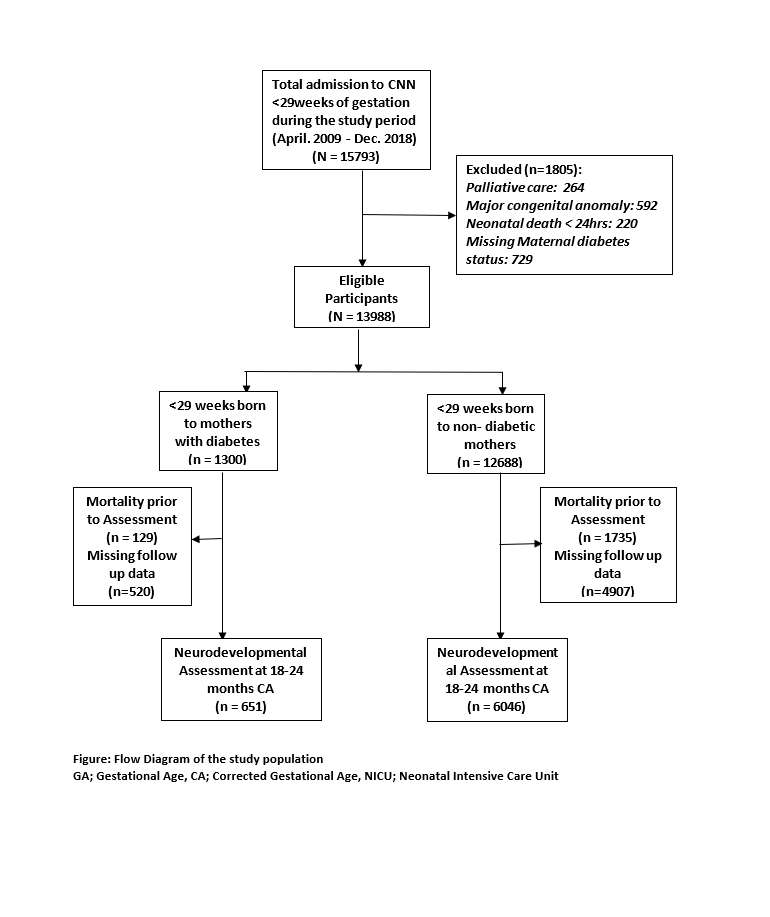Neonatal Follow-up
NICU Follow Up and Neurodevelopment 3: Impact of the Prenatal Environment on Development and Outcomes
220 - The Influence Of Maternal Diabetes On Neurodevelopmental outcomes of Extremely Preterm infants born < 29 weeks Gestation
Publication Number: 220.143

Adetokunbo A. Akinseye, MBBS
Fellow
University of Manitoba
Winnipeg, Manitoba, Canada
Presenting Author(s)
Background:
Diabetes is one of the most common medical complications of pregnancy, affecting about 10% of pregnancies worldwide. Despite advances in care of pregnant patients with diabetes, risks remain for the neonate. The influence of intrauterine exposure to maternal diabetes on neurodevelopmental outcomes in preterm infants remains understudied.
Objective:
To determine neurodevelopmental outcomes of surviving preterm infants < 29 weeks gestation born to mothers with diabetes compared to those born to non-diabetic mothers.
Design/Methods:
This was a retrospective cohort study using the Canadian Neonatal Network and Canadian Neonatal Follow Up Network databases. All preterm infants born < 29 weeks gestation, admitted to a level 3 NICU in Canada from April 1, 2009 to December 31, 2018 and who had neurodevelopmental assessment at 18-24 months corrected age (CA) were eligible. The primary outcomes were risk of Neurodevelopmental Impairment (NDI) (Bayley-III scores < 85 in any domain, cerebral palsy, or vision or hearing impairment) or significant NDI (sNDI) (Bayley scores < 70 in any domain, cerebral palsy GMFCS ≥ 3, hearing aided or blind). Secondary outcomes were the individual components of NDI or sNDI. Differences in maternal and infant characteristics were assessed using the Pearson Chi- square and student t test or Wilcoxon rank test. Adjusted odds ratios with 95% CIs were calculated for the outcomes between the 2 groups, adjusting for maternal and infant characteristics.
Results:
Of 13988 eligible infants, 1300 (9.3%) were exposed to diabetes, 12688 (90.7%) non exposed. 6697 had Bayley III assessments, 651 exposed and 6046 non exposed (Figure 1). Maternal and neonatal characteristics are shown in Table 1. 3006 infants had abnormal neurodevelopmental outcomes, 315 in those exposed and 2691 in those not exposed. (Table2). Neurodevelopmental outcomes with adjusted odds ratios are shown in Table 2.
Conclusion(s):
Significantly higher rates of NDI, language, or motor delays were noted in the preterm infants < 29 weeks gestation exposed to diabetes. Future research is needed to evaluate the aetiology and clinical significance of these findings.
.png)
.png)
